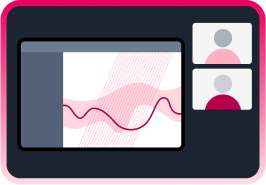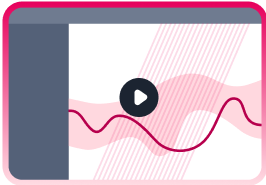What's Covered:
What is AIOps?
AIOps, also known as Artificial Intelligence for IT Operations, are multi-layered technology platforms that use big data to automate and improve IT operations with the help of data analytics, machine learning (ML), and artificial intelligence (AI).
AIOps platforms collect data from a number of IT/ops tools, devices, and platforms to pinpoint issues and respond in real-time. They provide traditional analytics tools as well.
Organizations use AIOps tools to overcome department siloeing, since IT/Ops so often remains separate from engineering, design, and other teams.
By aggregating data across monitoring systems, teams across an organization can access automation-driven insights that help organizations to continuously address improvements and enhance their digital products. This is known as Continuous Integration and Deployment, or CI/CD for short.
For the most part, AIOPs can be divided into 3 sub-disciplines:
- Service management (engaging)
- Performance manage (observing)
- Automation (acting)
Why are enterprises turning to AIOps platforms?
As IT systems and environments have grown in complexity, humans have struggled to keep up. Manual efforts are no longer enough, especially in our dynamic digital world, which never stops. AIOps platforms help fill the gaps for when humans are offline.
Service ticket volumes have increased exponentially with the boom in Internet of Things devices, new APIs, native mobile applications, and other new technologies.
AIOps platforms lower costs, decrease errors, and help humans to solve problems faster. They allow Enterprise IT/Ops teams to solve problems with the agility of a DevOps team. These tools will continue to empower organizations to grow, evolve, innovate, and disrupt. IT/Ops can no longer be a conservative department that provides stability.
What do AIOps tools do? How does AIOps work?
IT/Ops tools must keep adapting to the changing digital environment, which means that simply reacting to problems after they have already occurred is not going to be enough. The latest tools help teams anticipate problems before they become a million-dollar headache.
The rise in third-party cloud infrastructure has also enabled organizations to develop custom IT solutions and applications. Developers have more power than ever before, but IT/Ops remain responsible for the overall fitness of the IT ecosystem, especially how applications, services, and infrastructure interact with one another.
Key features of AIOps platforms include
- IT data. The newest AIOps platforms collect diverse data such as metrics and events from a number of IT/Ops management systems. Organizations can escape data silos by bringing data together from disparate tools and putting them in conversation with one another. When an organization’s data is collected in one place, it’s much easier to find the root cause of a problem and enable automation.
- Machine Learning. AIOps platforms come with the ability to analyze vast, diverse amounts of data with machine learning algorithms. Organizations can automate manual analytics and create new analytics categories from previously ignored data.
- Aggregated big data. With so much data in hand, organizations can use AIOps platforms to collect data offline, in real-time, and across different departments.
- Observability. AIOps platforms help organizations to make hypotheses about internal problems based on external data.
- Engagement. Chatbots and other interactive features powered by AI/ML are important features of AIOps platforms.
- Action. AIOps platforms automate important analysis and workflows, but humans must still make decisions based on their finds and data.
Who uses AIOps tools?
AIOps platforms are not replacing IT/Ops people. Instead, IT/Ops teams are being pushed to leverage new tools that involve big data, artificial intelligence (AI), machine learning (ML), and other automation tools. In fact, the rise of AIOps platforms means that new roles will continue emerging.







